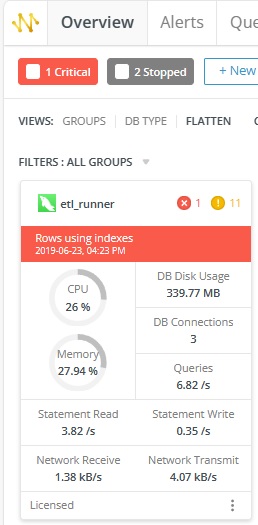
Last week's tutorial guided us through the creation of Materialized Views in PostgreSQL, using the DVD Rental Database as a practical example. As we learned there, PostgreSQL Materialized Views provide a powerful mechanism to enhance query performance by precomputing and storing the result set of a query as a physical table. Today's follow-up will cover other pertinent Materialized View operations such as refreshing a view, executing queries against it, as well as deleting a view should you no longer require it. As with the last blog article, we'll go over both DML statements as well as how to achieve the same result via the Navicat GUI.
PostgreSQL Materialized Views provide a powerful mechanism to enhance query performance by precomputing and storing the result set of a query as a physical table. This tutorial will guide you through the creation of Materialized Views in PostgreSQL, using the DVD Rental Database as a practical example.
SQLite is a lightweight, self-contained, and serverless relational database management system (RDBMS) that is widely used for embedded systems, mobile applications, and small to medium-sized websites. It is easy to set up, requires minimal configuration, and offers a powerful set of features for managing and manipulating data. In this guide, we will walk you through the process of getting started with SQLite, including installation and using the popular Chinook sample database for SQL examples.
Navicat Monitor 3 is a safe, simple and agentless remote server monitoring tool that includes many powerful features to make your monitoring effective as possible. You can access Navicat Monitor from anywhere via a web browser to access statistics on server load and performance regarding its availability, disk usage, network I/O, table locks and more.

Did you know that you can also collect custom performance metrics for specific instances using your own query, and receive alerts about your custom data when the metric value passes certain thresholds and durations? Custom metrics can even be displayed as charts to help better understand your data and quickly identify trends. In today's blog we'll create a custom metric that shows the average cost of movie rentals in the Sakila Sample Database.
In the digital age, databases play a vital role in managing and organizing information for countless applications and systems. As stewards of valuable data, it's essential for businesses and developers to be mindful of the types of information stored in their databases. While databases are designed to efficiently handle data, there are certain types of information that should almost never be stored in a database. In this article, we'll explore three things you should avoid storing in your database to maintain data integrity, security, and compliance.
- 2024 (1)
- 2023 (1)
- 2022 (1)
- 2021 (1)
- 2020 (1)
- 2019 (1)
- 2018 (1)
- 2017 (1)















